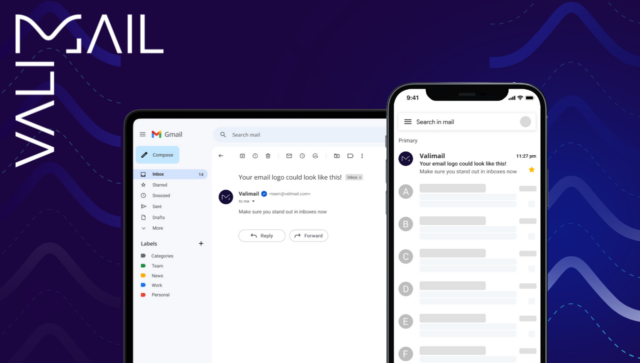One of the biggest challenges organizations face in getting email authentication to enforcement involves Sender Policy Framework (SPF).
Here’s why: If you can’t identify all the senders who should be able to send email messages using your domain, and then use SPF to authorize them, you can’t move your DMARC policy to p=quarantine or p=reject.

Moving to enforcement without authorizing every service you actually use means that a few legitimate senders are going to get blocked. Solving this problem takes a lot of ingenuity due to limitations within the SPF standard.
Many organizations turn to a quick-and-simple solution—SPF flattening—but it’s not as comprehensive or foolproof as it seems. Below, we’ll walk you through what SPF is, why SPF flattening doesn’t work, and a better (more reliable) solution you can trust.
A quick background on SPF
While the SPF standard dates back to 2003 and is well-understood and widely accepted, many IT organizations find it tricky to make it work in a modern, cloud-centric environment.
SPF is a DNS-based mechanism for defining an allowlist of mail servers that can send email on your domain’s behalf. The specification lets you authorize individual mail servers by IP address or by “including” SPF records that are defined on a specified domain.
When a domain name is listed in an SPF record, that tells receiving mail servers to go to the indicated address, where they will find additional rules: IP addresses, SPF macros, or additional domain names where more rules can be found. In other words, domain references can be nested, so one ruleset may contain several others.
Challenges of SPF
For most services that send email on your behalf, you need to put something in SPF to specifically allow list that sender: Either its IP address(es) or an SPF “include” mechanism that indicates where receiving mail servers can find the appropriate rulesets.
That was easy enough when companies primarily sent mail through servers they owned and operated themselves. It gets significantly more challenging when you have dozens of cloud services sending email on your behalf.
SPF lets you put a large number of IP addresses in your SPF record, but it strictly limits the number of domain lookups that receivers will do to just 10. That count includes not only domains explicitly listed in your SPF record but also any domain lookups contained within the listed domains.
If a service, such as Gmail, contains multiple domain lookups in its SPF record, all of those lookups count towards the total. So you can easily exhaust the 10-lookup limit by putting just three or four services into your SPF record.
SPF flattening doesn’t work
The solution many IT organizations have hit upon is called SPF flattening—which means taking all of those domain lookups (and the domain lookups nested within them) and translating them into a single “flat” list of IP addresses.
In other words, instead of letting the receiving mail gateways do the lookups for each inbound message, you do the lookups yourself, by hand, if necessary. Eventually, each of those lookups will (usually) lead you to a list of authorized IP addresses that you can place into your SPF record instead of referencing one or more domains for each service.
Sounds simple, right? Here’s where things can go badly wrong, though:
- Service providers frequently add and remove IP addresses from the list of sending IPs for their service.
- It’s easy to make errors — either in the IPs themselves or in the SPF syntax — when you’re building these long lists. Are you sure you got that IPv6 address right?
- Transforming that list of IP addresses and netblocks into an SPF record may require you to split it into multiple SPF records, linking them together — and possibly running into that 10-domain lookup limit all over again.
- Cloud service providers generally don’t notify their customers when they change the list of IP addresses from which they send email, so you’re going to have to track those changes yourself.
That means, if you’re the owner of a “flattened” SPF record, you now have the unenviable job of monitoring all the services in use, making sure that the list of IPs for each is still current, and that the overall list is complete.
And you did take notes when you were assembling the list, so you can tell which IP belongs to which service, right? Because you—or future IT admins—won’t be able to tell which is which just by looking at a long list of IPs.
Finally, humans tend to be really bad at managing lists of digits. Typos, transpositions, dropped periods, and other kinds of errors pop up all the same. For this reason, SPF flattening is fragile, brittle, error-prone, and winds up creating a significant maintenance overhead.
The solution to SPF Flattening: Valimail
Valimail’s solution is called Valimail Instant SPF®, and it solves the SPF 10-lookup limit without recourse to SPF flattening. Valimail Enforce includes the company’s unique, patented Instant SPF technology.
Valimail Instant SPF is the only automated SPF technology. Built on Valimail’s global, cloud-based infrastructure, it generates a tailored SPF record in milliseconds in response to each mail server request.
It’s scalable, fail-safe, and serves SPF records. Our approach is completely compliant with the SPF standard and is supported by every receiver that complies with the SPF specification, including all major ISPs and SEGs.
Instant SPF is just one feature you’ll have access to with Valimail Enforce. Our product will help you get to DMARC enforcement quickly and stay at continuous enforcement.



